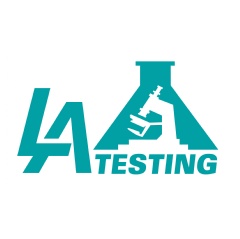California Workers and Residents Advised of Radon and Other Natural Sources of Radiation Exposure
LA Testing’s network of laboratories offer radiological testing services to identify radiation risks from radon and other sources in homes, schools and work environments.
In February, media outlets across the country published articles about elevated levels of radiation that visitors and workers of the Grand Canyon National Park Museum may have been exposed to over a number of years. The story broke after three 5 gallon buckets of uranium ore from a nearby uranium mine were discovered being stored in the museum by an exhibit.
The case is a good reminder that workers and the public can be exposed to radiation sources when they least expect it. Even though many people may not be aware of it, radiation is all around them. In fact, this natural “background” radiation has been here since the birth of the universe. People are exposed to small amounts of radiation from natural sources every day. This radiation exposure can be measured, and in the United States, the dose, which is the amount of radiation energy absorbed by the body, is most commonly reported in millirem (mrem). For example, a chest x-ray will cause a person to receive perhaps 10 mrem.
According to the U.S. Nuclear Regulatory Commission, people generally receive a total annual dose of about 620 mrem. Of this annual total, natural sources of radiation account for about 50%, while manmade sources account for the remaining 50%. Three categories of natural radiation sources include internal, cosmic and terrestrial. The Centers for Disease Control and Prevention (CDC) share the following information about these sources of natural radiation.
- Internal Radiation - Some naturally occurring radioactive elements such as uranium, thorium and radium change into other radioactive elements known as radon. These radioactive elements are in rock, soil and building materials all around us. Radon is in the air people breathe and, on average, gives each person a dose of 226 mrem per year. This is the largest source of natural radiation exposure. In addition, naturally occurring radioactive elements such as carbon, potassium, uranium, thorium and radium, as well as radioactive elements such as Carbon-14 (produced by cosmic radiation in the upper atmosphere), find their way into people’s food and drinking water. These radioactive elements give people a small dose of about 28 mrem per year.
- Cosmic or External Space Radiation - Cosmic radiation is high-energy radiation that comes from space. This radiation interacts with atoms in Earth’s upper atmosphere to produce other energetic particles and gamma rays. Doses of cosmic radiation vary with altitude. Cosmic radiation is more intense in the upper atmosphere and most intense in deep space beyond Earth’s magnetic field. People get exposure to cosmic radiation through their skin. The average annual dose of cosmic radiation that people receive is 34 mrem per year.
- Terrestrial External Radiation - Terrestrial external radiation comes from rock, soil, water and vegetation, and exposure occurs through the skin. Some naturally occurring radioactive elements such as uranium, thorium and radium give people a small external dose of 22 mrem per year.
“For the typical resident of California, radon is most likely going to be their largest natural source of radiation exposure,” said Michael Chapman, Laboratory Manager at LA Testing’s Huntington Beach facility. “Exposure to elevated levels of radon over time is believed to be the second leading cause of lung cancer. The Environmental Protection Agency and the California Department of Conservation have radon potential maps of the state which can help residents locate areas that are more likely to have radon levels that exceed the EPA’s recommended radon action level. However, the only way to know if radon is present is to have a home, school or building tested.”
To help with identifying radiological sources, LA Testing offers radon analysis and even provides easy-to-use test kits. Through their network of laboratories, they also provide other environmental radiological testing services. Their parent company, EMSL Analytical, Inc., possess a radioactive materials license which allow them to handle most clients’ environmental radioactive testing needs.
To learn more about testing for radon or other radiological, indoor air quality (IAQ), environmental, occupational, health and safety services, please visit www.LATesting.com or www.RadonTestingLab.com, email info@LATesting.com or call (800) 755-1794.
About LA Testing
LA Testing is California’s leading laboratory for indoor air quality testing of asbestos, mold, lead, VOCs, formaldehyde, soot, char, ash and smoke damage, particulates and other chemicals. In addition, LA Testing offers a full range of air sampling and investigative equipment to professionals and the general public. LA Testing maintains an extensive list of accreditations including: AIHA LAP LLC., AIHA ELLAP, AIHA EMLAP and AIHA IHLAP, CDC ELITE, NVLAP, State of California, State of Hawaii Department of Health and other states. LA Testing, along with the EMSL Analytical, Inc. network, has multiple laboratories throughout California including South Pasadena, Huntington Beach, San Leandro and San Diego.
( Press Release Image: https://photos.webwire.com/prmedia/9645/240398/240398-1.jpg )
WebWireID240398
- Contact Information
- Joseph Frasca
- Senior Vice President of Marketing
- LA Testing
- (1) 856-303-2503
- Contact via E-mail
This news content may be integrated into any legitimate news gathering and publishing effort. Linking is permitted.
News Release Distribution and Press Release Distribution Services Provided by WebWire.
